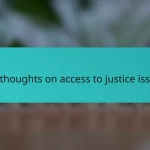Key takeaways
- Legal advocacy is about empowering individuals and communities to understand their rights and seek justice.
- Identifying and reaching out to your local congressperson is crucial for effective advocacy, making your voice heard in political discussions.
- Crafting a clear and personal advocacy message can enhance its impact, making it relatable and urgent.
- Following up respectfully after your initial outreach is important for maintaining communication and reinforcing your concerns.
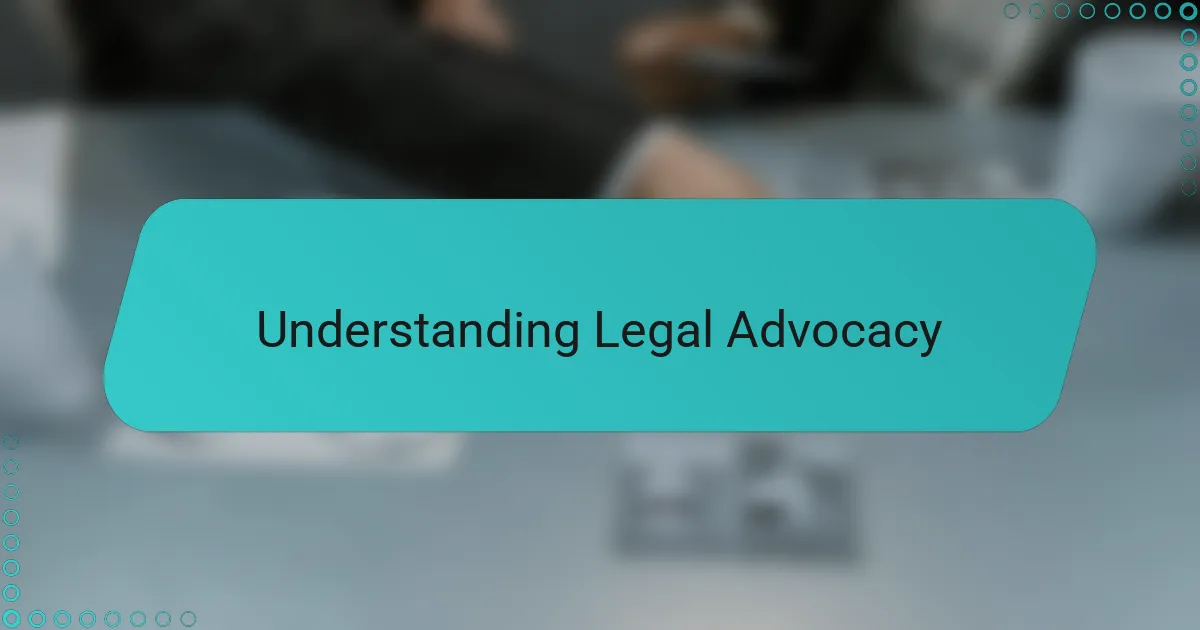
Understanding Legal Advocacy
Legal advocacy, to me, means more than just knowing laws—it’s about using that knowledge to make a real difference in people’s lives. Have you ever felt powerless in a situation where you knew something was unfair? That’s where legal advocacy steps in, turning frustration into action.
I recall a time when I witnessed a community struggling to understand their rights. Watching them gain confidence through guidance made me realize how essential advocacy is in bridging the gap between the law and everyday people. It’s not just about courtroom battles; it’s about standing up for justice in everyday situations.
What makes legal advocacy powerful is its focus on change—both legally and socially. It encourages us to ask tough questions: How can the law protect the vulnerable? And how can we, as advocates, ensure those protections are real and effective? These questions fuel the passion behind every effort to reach out and engage with lawmakers.
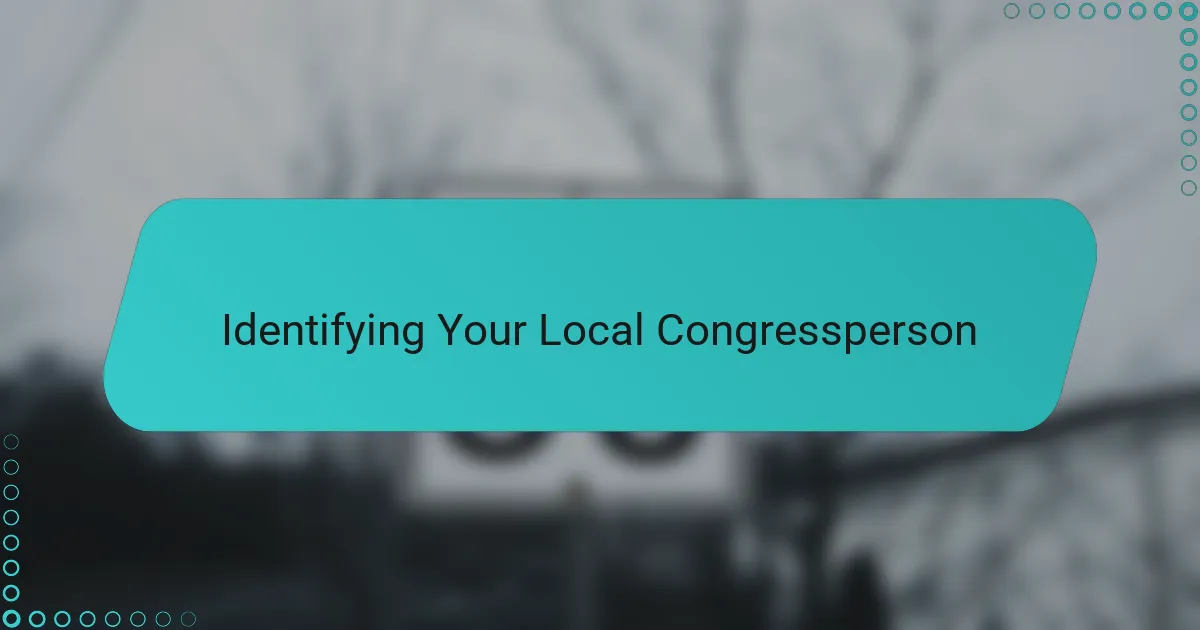
Identifying Your Local Congressperson
Finding my local congressperson felt like a crucial first step, but also a bit daunting at first. I wondered, where do I even start? Luckily, it turned out to be simpler than I expected—I used an online tool by entering my zip code, and just like that, I had my representative’s name and contact details at my fingertips.
I remember feeling a mix of excitement and nervousness when I learned who truly represents my community. It made me realize that these individuals aren’t just distant figures in Washington; they are the voice for people like me and you. That connection motivated me to act, knowing that my concerns could reach someone who cares.
Have you ever thought about how your neighborhood shapes your representation? District lines can seem confusing, but understanding them gave me clarity and confidence. It’s empowering to see that, despite the complexity, identifying your congressperson is the gateway to making your voice heard in the halls of power.
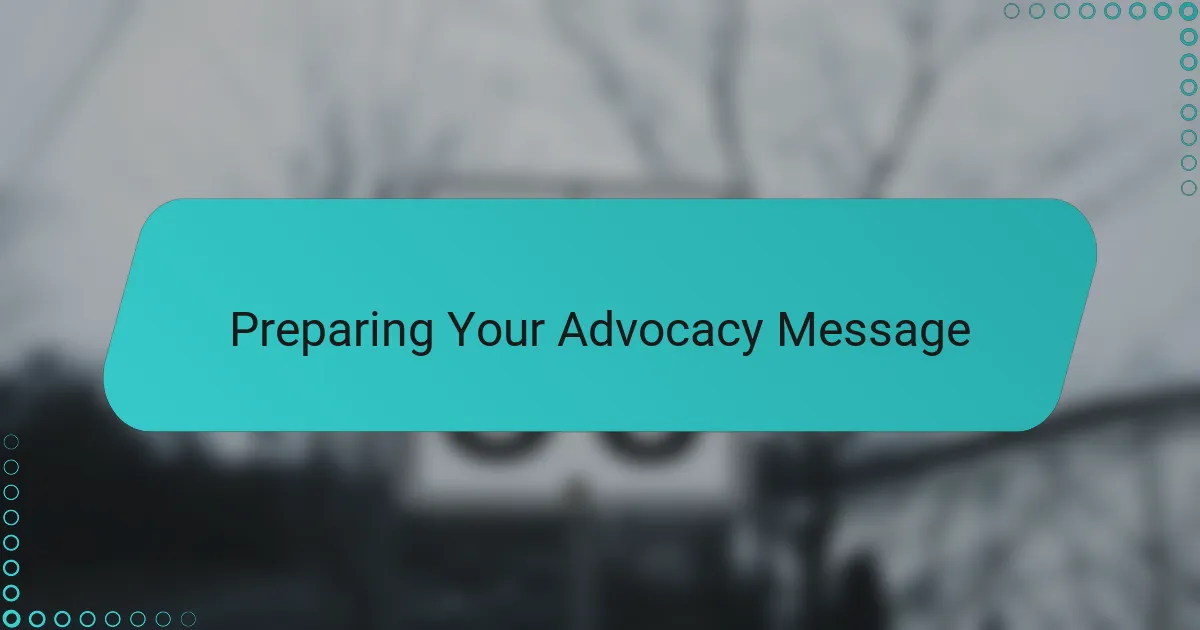
Preparing Your Advocacy Message
Crafting my advocacy message was the moment I realized how important clarity is. Have you ever tried explaining something complex and felt your words getting tangled? I learned to focus on one main point, making it easy for my congressperson to understand exactly what I was asking for.
I also thought a lot about why this issue mattered to me personally. When I shared that—whether it was a story from my community or a personal experience—it made my message more real, more urgent. People respond to stories, not just statistics, and that human element gave my words weight.
Choosing the right tone was another key lesson. I wanted to be respectful but firm, showing that I cared deeply without sounding confrontational. Finding that balance helped me feel confident my message would be taken seriously, not brushed aside. Have you found that tone can change how your message is received? I certainly did.
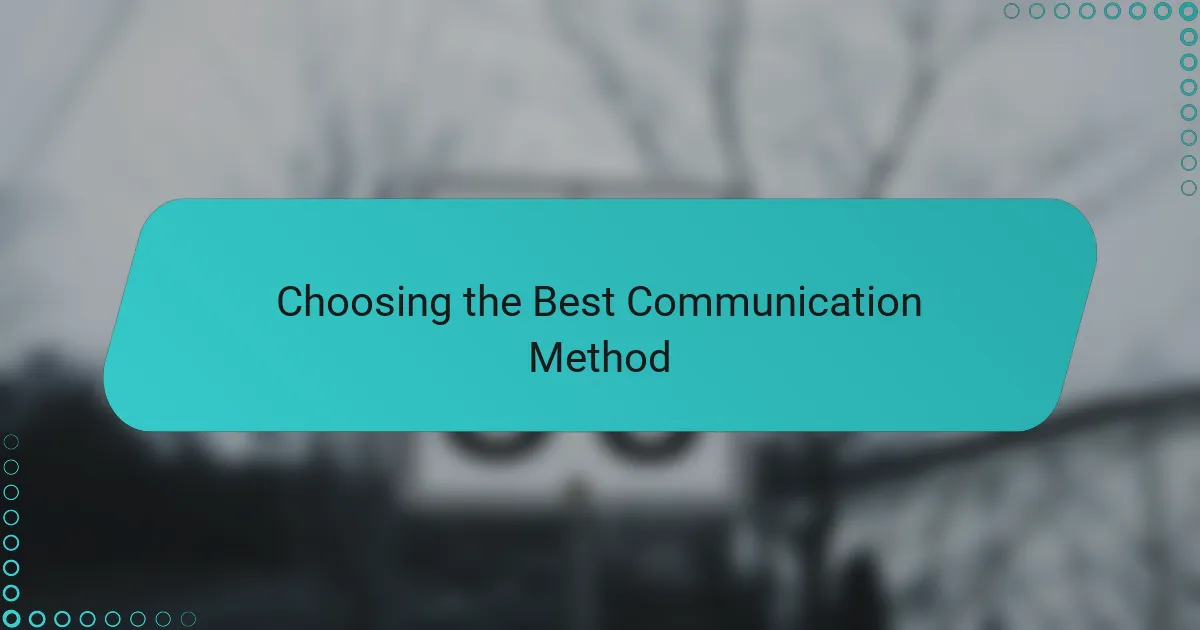
Choosing the Best Communication Method
Deciding how to reach out to my congressperson felt like choosing the right tool for the job. Should I send an email, place a phone call, or maybe write a letter? Each method seemed to offer a different way to connect, so I had to think about which would be most effective for my message and schedule.
I found myself asking, “What’s the best way to make my voice heard clearly?” For me, an email worked well because it allowed me to organize my thoughts carefully, but I also wondered if a phone call might feel more personal. It turns out that matching the communication style to the urgency and complexity of the issue really mattered.
Another thing I considered was how my congressperson’s office preferred to be contacted. Some offices respond faster to emails, while others prioritize calls. I learned that doing a little research—like checking their website or even asking their staff—can save time and increase the chance your message gets noticed. Have you ever tried a method that just didn’t feel right? Knowing your audience can make all the difference.
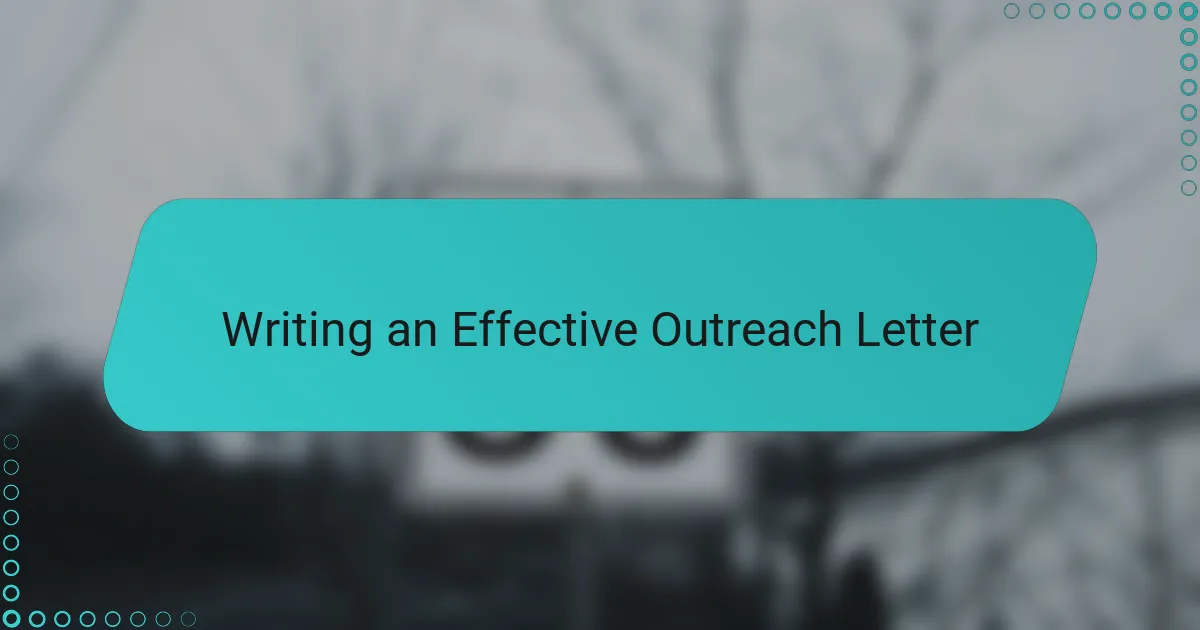
Writing an Effective Outreach Letter
When I sat down to write my outreach letter, I realized the importance of starting strong—those first few sentences had to grab attention and clearly state my purpose. Have you ever skimmed through a letter only to lose interest immediately? That’s exactly what I wanted to avoid by being concise and direct from the get-go.
I found that sharing a brief personal story helped me connect on a human level. Instead of diving straight into facts, I described how the issue affected me and my community. This approach made my concerns more relatable and gave my letter a sense of urgency and sincerity that statistics alone can’t convey.
Choosing the right tone was tricky, though. I wanted to be respectful but assertive, which I learned can encourage a positive response instead of defensive silence. Have you noticed how a well-balanced tone can open doors rather than close them? That balance made me confident that my message would be read and taken seriously.
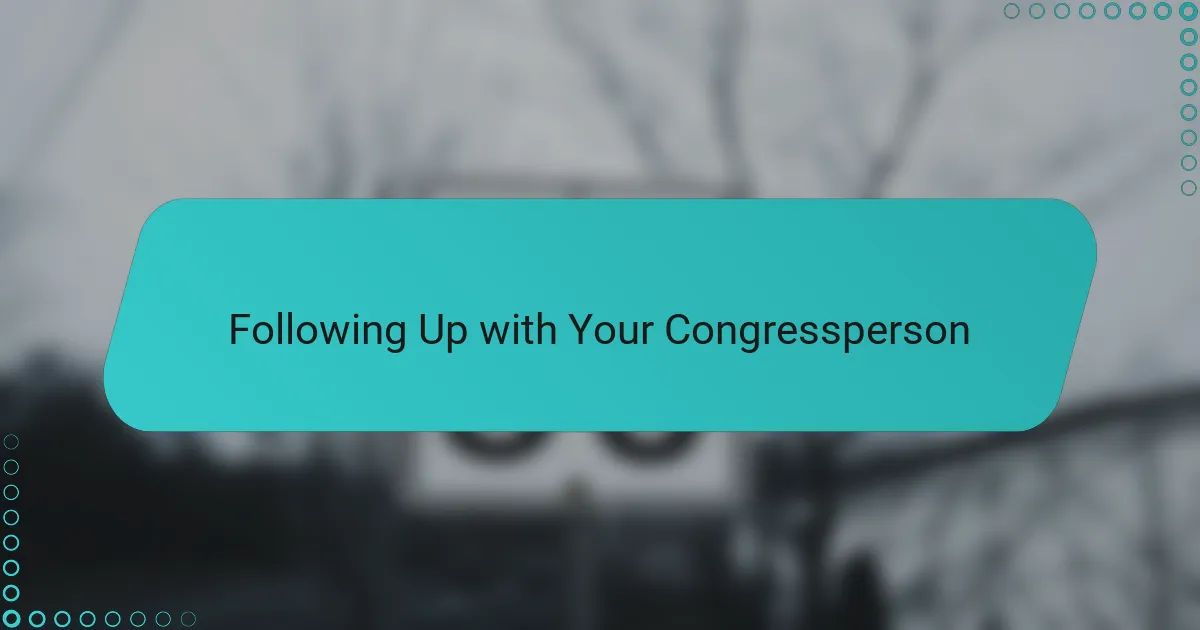
Following Up with Your Congressperson
Following up with my congressperson felt like the next natural step after sending my initial message. I asked myself, “How long should I wait before reaching out again?” From experience, giving it about two weeks strikes the right balance—enough time for them to review my concerns but not so long that they forget about me.
When I did follow up, I made sure to reference my original message briefly and politely. This reminded their office of my issue without sounding pushy. I found that a friendly, persistent approach shows you care and keeps the conversation moving forward.
Have you ever wondered if your follow-up might annoy busy staff? I thought about that too, but I learned that respectful persistence often earns more attention than silence. It’s a small effort that can make a big difference in making your voice truly heard.
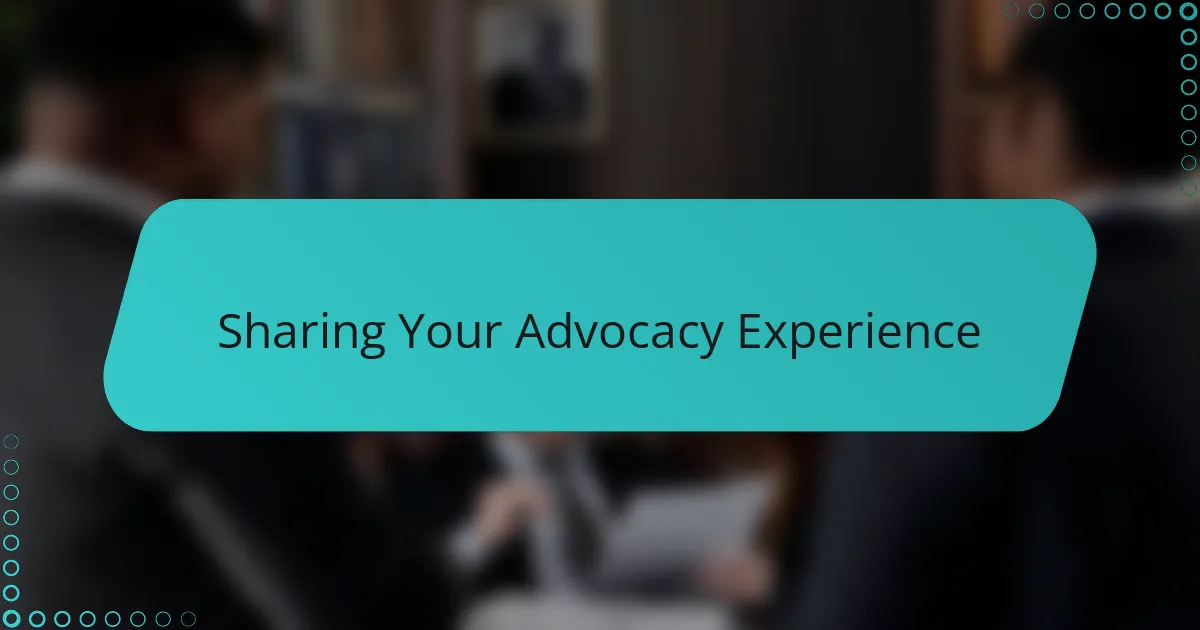
Sharing Your Advocacy Experience
Sharing my advocacy experience felt both empowering and a little vulnerable. I asked myself, “Will my story really resonate with others?” But when I shared how reaching out changed my perspective and encouraged others to speak up, I realized storytelling can build a sense of community and inspire action.
I remember hesitating at first, worried that my approach wasn’t perfect or my message too simple. Then I saw how others related to my experience and started asking questions of their own. That connection reminded me that advocacy is as much about listening and learning as it is about speaking.
Have you ever noticed how sharing what you’ve learned can deepen your own commitment? For me, putting my journey into words helped me reflect on the challenges and successes—and fueled my determination to keep pushing for change alongside others who care.

